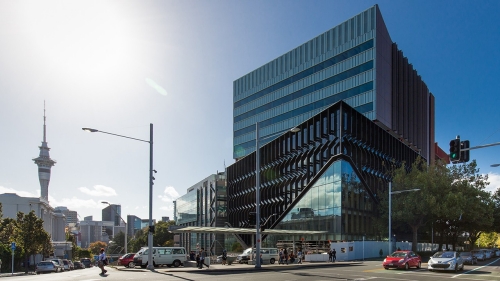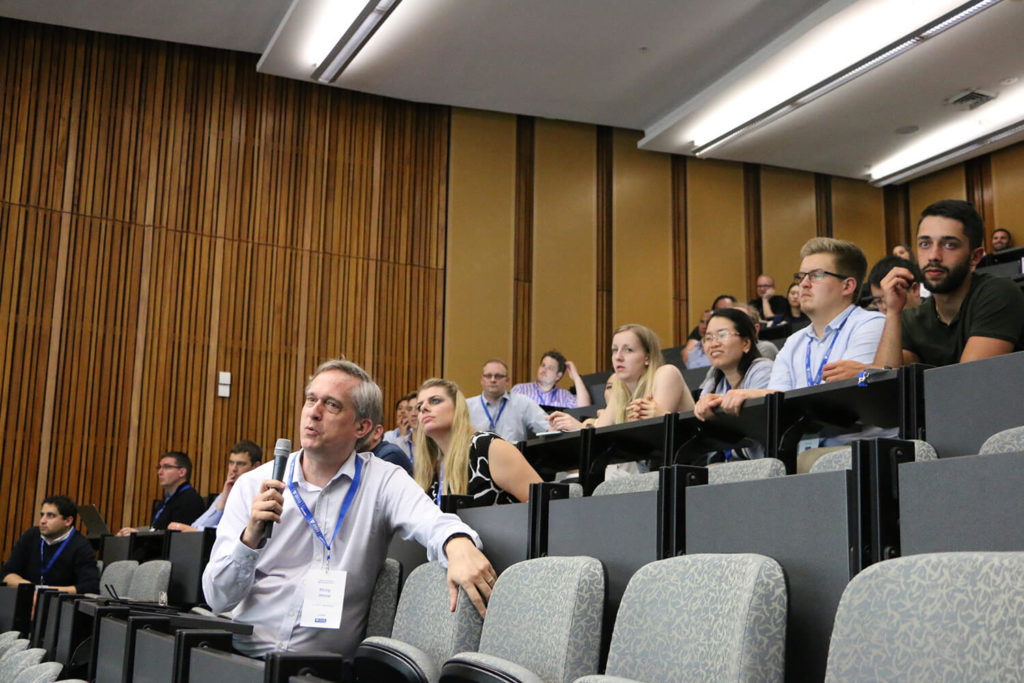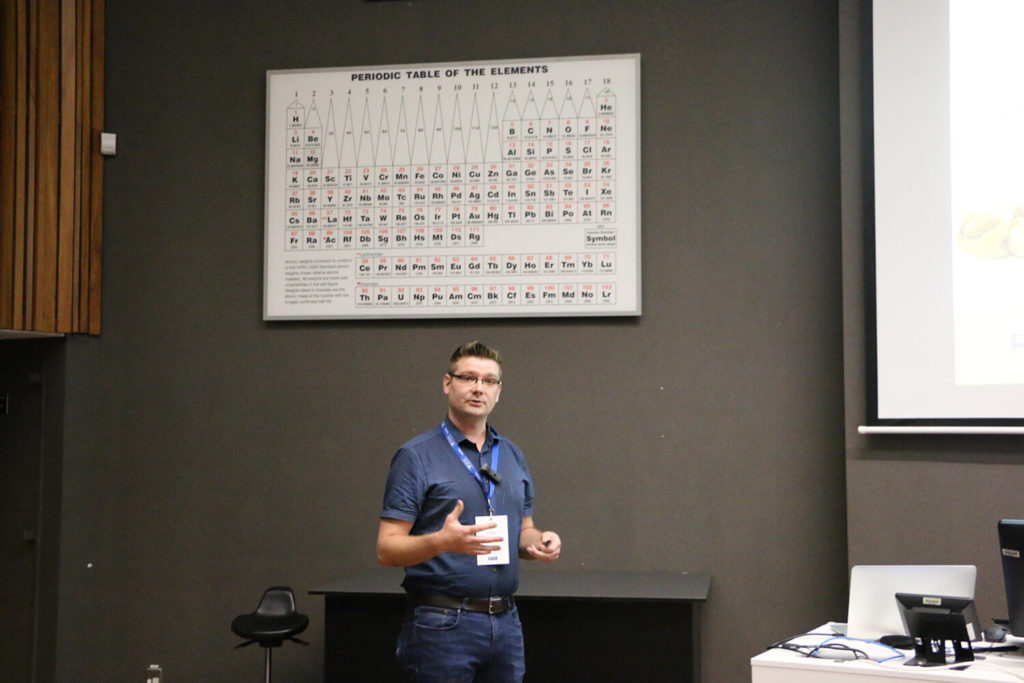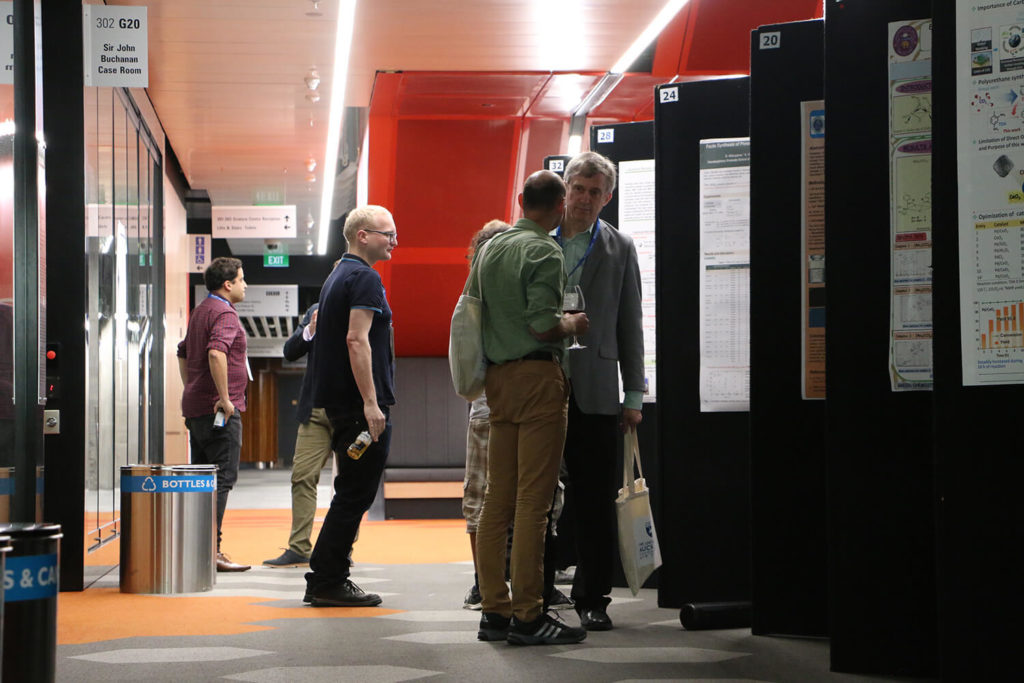University of Auckland Hosts Green Chemistry and Technology Conference
One hundred scientists discuss Green Chemistry innovations to Tackle Environmental Problems
The Green Chemistry and Technology Conference took place in December at Auckland University. Organized by Center for Green Chemical Science of the University of Auckland, it gathered over 100 scientists from 15 different countries from Asia-Pacific, Europe, North America and South America who shared breakthroughs and progress in the area of sustainable chemistry.
As the invitation to the conference stated, “the main urgency of green chemistry is to advance society in ways that are sustainable and benign to the environment”. To ensure a livable planet for the future, we have to make products and carry out process thinking to optimise resources and reduce the impact on the environment, and this means we must achieve sustainability by design.

Center for Green Chemical Science of the University of Auckland. Photo: The University of Auckland
Some of the main questions for green chemistry are: how do we make smooth and clean processes that don’t have an irreversible impact on the environment and how do we use resources wisely? How do we make better products, that are more efficient, and longer lasting, and that could be recycled into the manufacturing process? How do we decontaminate, contain risk and avoid future damage?

Dr Philip Jessop raising a question in the Green Chemistry and Technology Conference. Photo: The University of Auckland
Special attention was given to the manufacturing and use of solvents, paints, inks, pharmaceuticals, the methodology for toxicity analysis of new substances and the remediation of environmental pollution. There is an undeniable need to design sustainably efficient products that do not have a negative impact on the environment. We need to develop new materials and processes for efficient energy production and storage and improve manufacturing in order to make it solvent-free, and for reactions to take place at mild conditions such as low temperature and pressure which would reduce the energy input, and do away with the need for initializers.
How nature finds its own way to update and improve its efficiency is an endless wonder, and scientists outlined a number of innovations that aim to replicate this phenomena such as using visible light to catalyse reactions for the production of fine and commodity chemicals, for example, using sunlight to catalyse the oxidation of certain molecules such as Citronellol to produce Rose oxide, used as fragrance.
Scientists have found innovative ways to optimize chemical reactions using the most abundant greenhouse gas to improve the efficiency of chemicals like paint. By switching the polarity of the material through carbon dioxide gradients, water-based paints have been improved. Thanks to this technology their performance is similar to that of the oil-based paints but without the release of volatile organic compounds (VOCs) and thus its environmental impact is lower. This work has been done by Dr Philip Jessop, from Queen’s University.
Low-cost methods such as mechanochemical treatment and liquefaction have been developed to extract cellulose and lignin from agricultural biomass, as well as chitin from crustacean shell waste, and to transform and upgrade the resulting materials into value-added products such as resins or specific fine chemical precursors for the pharmaceutical industry. A technology to obtain adhesives from lignin has been already scaled up to commercial-scale in New Zealand, and commercialized under the name of LigateTM.
New materials with improved efficiency and increased performance, minimize waste and utilize resources wisely. For example, enhanced batteries made with high capacity anode materials are more efficient and safer to use, functional materials such as active packaging allows to conserve food against pathogens and can be produced using renewable resources as feedstock.
In addition, there was keen interest in solving environmental problems that bring about high health risks like the need for mercury or oil spill remediation, just to mention two of them. In the frontline of remediation, a technology based on polysulfide synthesised from sulfur, a by‐product of petroleum refining, and spent cooking oils from the food industry, allows to recover crude oil from spills as well as metals that pose a big risk to water bodies after irrigating with certain fungicides. This technology, developed by Chalker Research Lab, is also being targeted to artisanal gold mining, to avoid the severe health damage on millions of people that use this technique to make a living in the developing world.

Dr Justin Chalker presenting his work at the Green Chemistry and Technology Conference. Photo: The University of Auckland
Green chemistry is not only about new creations in the lab, but also about comprehensive risk assessment of new substances along with regulations for their correct use. This aims to ensure that the products we use are innocuous for our health. Comprehensive collaboration among sectors including academia, companies, government institutions and environmental non-profit organizations giving each other feedback about risk-assessment and definition of sustainable parameters are key elements to make more effective the regulation process. Collaboration also allows to create free-access databases of substances and practices to provide support for sustainable product design.
Companies that practice transparency get extra benefit from this collaboration and gain recognition for their efforts towards sustainability, as they can get authentication and credibility labels and certifications.
Regulation and market forces include increased transparency and therefore lead to pressure from consumers and a growing demand for sustainability and integrity in the green industry. These issues drive innovation in the lab environment and can translate into more successful products in the market. The growing interest in chemical sustainability also promotes and funds research which includes assessments to help set up product labels and certifications. Accreditation with eco labels and certifications, in turn, encourage authentic adoption of sustainable practices, and, as explained by the New Zealand Ecolabelling Trust, can foster reputation for environmental protection.
Cross group collaboration also plays an important role in promoting sustainability. Some projects presented at the conference were the result of this type of work. This is the case of the production of fine and commodity chemicals from chitin, done by Dr Jonathan Sperry of The University of Auckland, Dr Ning Yan of the National University of Singapore and other collaborators, and the work on characterization and modelling of atomically-specific clusters in catalysis, presented by Dr Gregory Metha of University of Adelaide, co-work with Dr Vladimir Golovko of University of Canterbury as well as with other scientists. And events like The Green Chemistry and Technology Conference offer the opportunity to exchange viewpoints and match interests for joint research projects.

Attendants sharing opinions in the Green Chemistry and Technology Conference. Photo: The University of Auckland
Taking into consideration the numerous environmental problems the world faces, it is clear that scientists have a very long way to go regarding the development of innovative and feasible solutions. However, as their presentations and exchanges during the conference in New Zealand highlighted, collaboration, dedication and creativity are key elements to keep the scientific community in the frontline of innovation, finding and developing viable, efficient, and short and long-term cost-effective solutions whose implementation would lead to a more sustainable and livable world.


Leave a comment